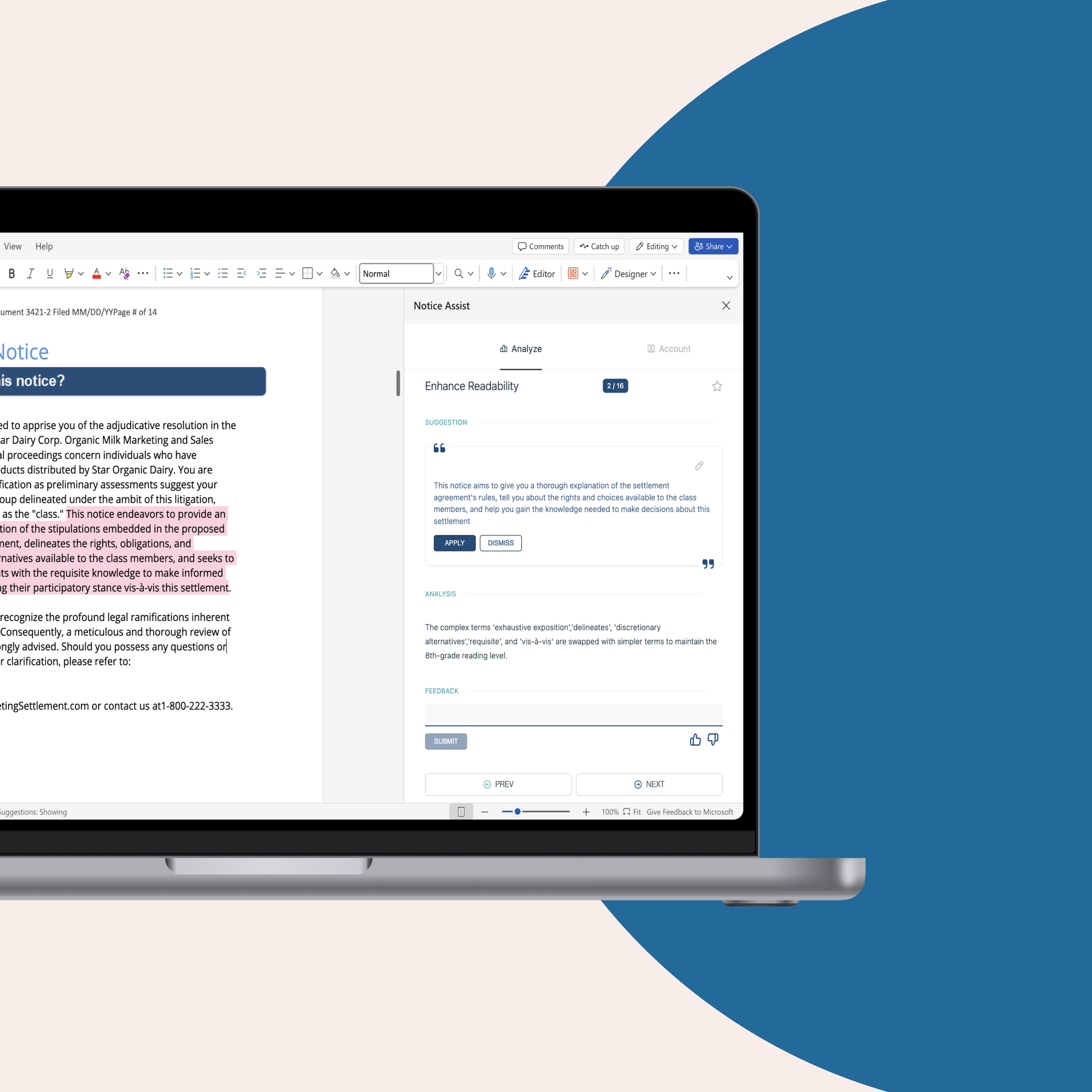Class Actions 101 Why We All Need Class Actions
By Jocelyn D. Larkin
With class actions much in the news, and the Supreme Court deciding a couple of proemployerblockbuster cases last term, a new practitioner might well wonder: “have class actions hit their ‘sell by’ date?” Has Rule 23’s half century procedural experiment run its course? Should our merry band of CADS members pack up our instruments and head to IP or bankruptcy law? Not quite yet. Let’s pause to remember why this whole thing started in the first place.
What did the Federal Civil Rules Advisory Committee have in mind back in 1966 when it drafted the modern Rule 23? The drafters were quite clear that at least one purpose was to facilitate civil rights class actions. Recall that the Civil Rights Act of 1964 had just passed; the class action was seen as an effective tool to dismantle institutional discrimination on a broad scale.
Why were class actions necessary? Discrimination is, by definition, based on a class-wide bias. In the workplace, victims of discrimination would rightly fear retaliation if they challenged their employer in litigation. Low wage workers would be loath to risk their jobs in individual litigation, assuming they could even find a lawyer to take their case. In addition, it would be impossible in an individual case for plaintiffs to afford the complex expert statistical evidence often necessary to prove liability. Finally, a class action injunctive remedy gives a federal court broad power to change practices and monitor implementation over a number of years.
Maybe that made sense in the past but are class actions still necessary since the most pernicious forms of explicit discrimination have been overcome? Unfortunately, there remain in our society victims of illegal conduct who lack the resources or capacity to obtain justice without a class action. For example, courts have in the past year certified class actions in two states on behalf of children who are suffering abuse and neglect in foster care systems lacking effective screening and oversight. There are also a series of class actions around the country challenging the unnecessary institutionalization of persons with developmental disabilities. An individual case could not accomplish the systemic change that is needed to ensure that such illegal practices are stopped. Corporate fraud unfortunately also remains alive and well. The smartest guys in the room at Enron left a trail of swindled investors and pensioners in their wake. And how about that Madoff chap?
Can’t victims of fraud just file individual cases in federal court with the help of plaintiffs’ lawyers on contingency contracts? The drafters of Rule 23 also understood that damage claims, and particularly small value claims, could not be litigated in a cost effective way in federal court, even where statutory attorneys’ fees were available. Those claims would consequently not be brought.
If the per capita loss is very small, and a consumer only receives a $20 check at the end, is it really worth all the time and money of the federal courts to litigate consumer or securities cases? That question assumes that the only purpose of the case is compensation to the victims. Congress has created many federal statutes that permit private enforcement actions because it understands that federal agencies will not have the resources to track down and prosecute every wrongdoer. So, private class actions also serve to enforce important federal laws and deter fraud and other illegal conduct.
But, aren’t class actions just making lawyers rich? That’s what people think but the data doesn’t support it. Vanderbilt Law Professor Brian Fitzgerald conducted an empirical study of class action settlements and found that the mean rate of fees awarded was approximately 25% of the settlement funds. That percentage is, of course, far lower than the typical contingency fee (33% - 40%) in an individual lawsuit. So, while some plaintiffs’ lawyers may be making money in class action practice, the amount needs to be considered in light of the risk they take on (as many class actions are dismissed or not certified), the length of the case (years!) and – most importantly – the results that they obtain for the class.
So, maybe class actions make sense for plaintiffs. But what about defendants? Sometimes, corporate or government defendants have a big legal problem on their hands – perhaps they sold a defective pharmaceutical or lost billions because of the risky investments of a rogue trader. They may be facing hundreds of lawsuits in dozens of jurisdictions and the costs can rapidly mount. Class actions provide a mechanism to resolve the claims with a coherent compensation scheme and ensure global peace for the settling defendant. If claims are extinguished in the class action after proper notice, the defendant need not worry about new claims popping up in the future.
Theoretically that sounds right but does it really happen? The recent Third Circuit en banc decision in Sullivan v. DB Investments, 667 F.3d 273 (3d Cir. 2011) provides a good example. The case involved a class action settlement resolving a series of federal and state anti-trust actions against De Beers for its alleged manipulation of world diamond prices for the past half century. The classes included over 184 million direct and indirect purchasers. That’s a lot of claims. The settlement was ultimately affirmed over a range of objections. Chief Judge Scirica wrote an interesting concurrence emphasizing how class actions ensure something for everybody: “redress of injuries, procedural due process, efficiency, horizontal equity among injured claimants, and finality.”
But haven’t there been abuses of class actions? Certainly. But Rule 23 provides district courts with broad supervisory power over class actions and judges have not been reluctant to step in when they see such abuses. Congress has responded as well. The Class Action Fairness Act of 2006 targeted the use of coupon settlements and imposed some limitations on their use.
What about class action objectors? Aren’t they mucking up the system and increasing costs? Like everything else, there are legitimate objectors and there are those with more selfinterested motives. In the ideal situation, objectors can serve as an extra set of eyes, assisting the busy district court judge by pointing out weaknesses in the settlement that the settling parties may not be eager to highlight or simply did not recognize in the course of their negotiations. In those circumstances, a bad agreement isn’t approved and a pretty good agreement can be modified and strengthened. In the worst case, the objector is interested in holding up the settlement with the threat of an appeal in order to be bought off, or the objector may simply be ideologically opposed to class actions. Those objectors present serious challenges for a judge and settling parties.
What can lawyers do to make class actions work better? On the plaintiff side, focus on cases with real victims and be sure that you have the resources to see a case all the way to the end. On the defense side, avoid the reverse auction temptation – shopping for plaintiffs’ lawyers willing to accept a low ball settlement when class cases with legitimate plaintiff firms are already pending. Everybody needs to avoid unnecessarily cumbersome claims procedures and to write class notices that are in plain English. The Federal Judicial Center has some excellent model notices on its website.
Originally published in Class Action and Derivatives Suit Committee Newsletter, (ABA Section of Litigation, Summer 2012) By Jocelyn D. Larkin Impact Fund
Want more news and updates from the Impact Fund blog? Join our mailing list and never miss a post.











